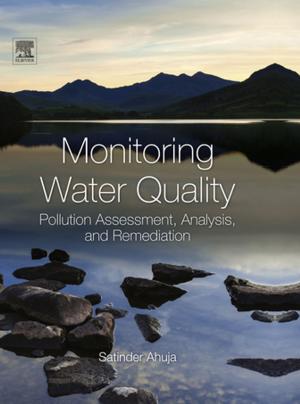Lipid Oxidation
Challenges in Food Systems
Nonfiction, Science & Nature, Science, Biological Sciences, Cytology, Biochemistry| Author: | ISBN: | 9780988856516 | |
| Publisher: | Elsevier Science | Publication: | August 15, 2015 |
| Imprint: | Academic Press and AOCS Press | Language: | English |
| Author: | |
| ISBN: | 9780988856516 |
| Publisher: | Elsevier Science |
| Publication: | August 15, 2015 |
| Imprint: | Academic Press and AOCS Press |
| Language: | English |
Lipid oxidation in food systems is one of the most important factors which affect food quality, nutrition, safety, color and consumers’ acceptance. The control of lipid oxidation remains an ongoing challenge as most foods constitute very complex matrices. Lipids are mostly incorporated as emulsions, and chemical reactions occur at various interfaces throughout the food matrix. Recently, incorporation of healthy lipids into food systems to deliver the desired nutrients is becoming more popular in the food industry. Many food ingredients contain a vast array of components, many of them unknown or constituting diverse or undefined molecular structures making the need in the food industry to develop effective approaches to mitigate lipid oxidation in food systems. This book provides recent perspectives aimed at a better understanding of lipid oxidation mechanisms and strategies to improve the oxidative stability of food systems.
- Five chapters on naturally-derived antioxidants that focus on applications within food systems
- Contributors include an international group of leading researchers from academic, industrial, and governmental entities
- Discusses the oxidative stability of enzymatically produced oils and fats
- Provides overviews on the complexities of lipid oxidation mechanisms, and emulsion systems most suseptible to rapid lipid oxidation
Lipid oxidation in food systems is one of the most important factors which affect food quality, nutrition, safety, color and consumers’ acceptance. The control of lipid oxidation remains an ongoing challenge as most foods constitute very complex matrices. Lipids are mostly incorporated as emulsions, and chemical reactions occur at various interfaces throughout the food matrix. Recently, incorporation of healthy lipids into food systems to deliver the desired nutrients is becoming more popular in the food industry. Many food ingredients contain a vast array of components, many of them unknown or constituting diverse or undefined molecular structures making the need in the food industry to develop effective approaches to mitigate lipid oxidation in food systems. This book provides recent perspectives aimed at a better understanding of lipid oxidation mechanisms and strategies to improve the oxidative stability of food systems.
- Five chapters on naturally-derived antioxidants that focus on applications within food systems
- Contributors include an international group of leading researchers from academic, industrial, and governmental entities
- Discusses the oxidative stability of enzymatically produced oils and fats
- Provides overviews on the complexities of lipid oxidation mechanisms, and emulsion systems most suseptible to rapid lipid oxidation















